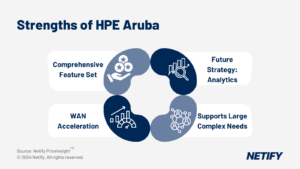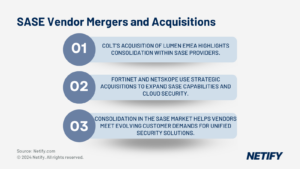| SD-WAN vendors like Cisco, Versa and Fortinet all offer dynamic traffic routing to optimise traffic paths, enhance network agility and improve performance in real-time. |
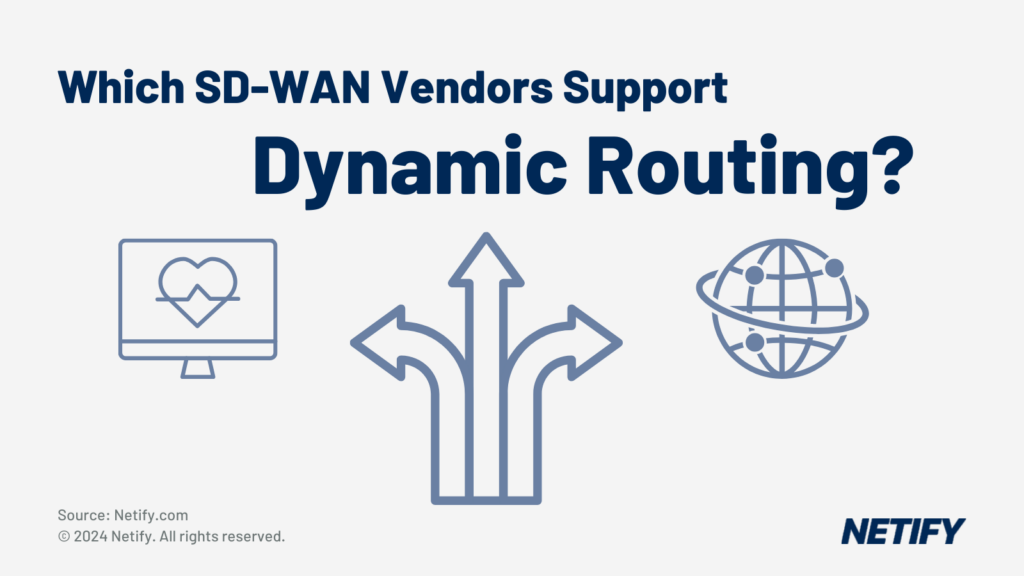
When considering SD-WAN providers, one rising concern will be how a new provider will implement your existing routing. More and more organisations are turning to SD-WAN to revolutionise their networks and replace legacy technologies they might be running. SD-WAN has many benefits; depending on your solution, you can expect increased network performance, simplified management and visibility. Appliances can route traffic optimally over multiple transport types (MPLS, 4G/5G, public broadband internet, amongst others).
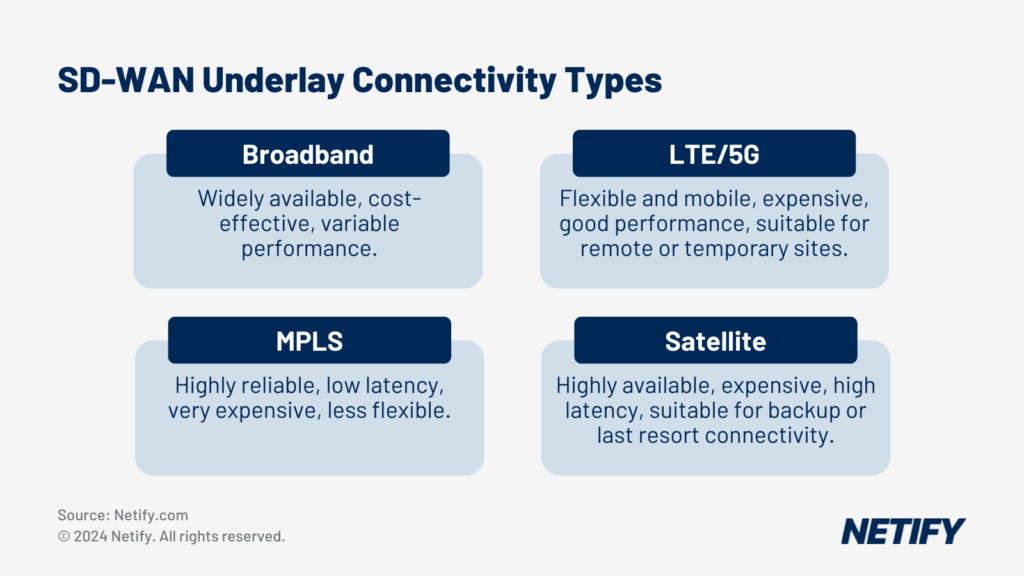
SD-WAN Underlay Connectivity Types
For SD-WAN to achieve this, you should include dynamic path selection when designing your solution. Dynamic path selection can route traffic based on different policy criteria, including the incoming interface, source/destination address, applications, services, user/user groups and location. This page will educate and help you understand what options providers and vendors have regarding routing.
WAN Routing Challenges

Application Performance and Reliability Benefits
Routing between WANs has always had a higher level of complexity. Optimisation usually means they are easily reachable, and factors such as latency, jitter, bandwidth and packet loss are seldom specified. With traditional technologies such as MPLS, this can be time-consuming and expensive. SD-WAN uses intelligent logic to provide advanced routing on the overlay to accelerate and optimise the WAN in real-time. This feature can include enhanced analytics, automation and control from a centralised location. Another challenge is that each industry has different growing needs, which you must be able to accommodate quickly. An example is a healthcare provider upgrading their MRI scanners to be capable of 3D scans, which they then forward to other departments and the patient. This example will vastly increase the traffic from this location. Dynamic routing will allow routes to load balance and optimise the traffic across the links without the input of a network engineer needed.
Routing Protocols
There are several protocols which are enabled when dynamic routing is required. The five most common are; Enhanced Interior Gateway Routing Protocol (EIGRP), Interior Gateway Routing Protocol (IGRP), Intermediate System to Intermediate System (IS-IS), Open Shortest Path First (OSPF) and Routing Information Protocol (RIP v1 and v2). Each protocol routes traffic via different methods. These two standards are Distance Vector Routing (RIP, IGRP and EIGRP) and Link-State Routing (OSPF and IS-IS). Other SD-WAN vendors offer different protocols and typically give customers a choice between a few. The table below showcases some leading providers and the routing protocols and services they offer.
SD-WAN Routing Protocols By Vendor Comparison
| wdt_ID | wdt_created_by | wdt_created_at | wdt_last_edited_by | wdt_last_edited_at | Provider | Routing Services | Supported Protocols |
|---|---|---|---|---|---|---|---|
| 1 | hyelland | 29/10/2024 05:10 PM | hyelland | 29/10/2024 05:10 PM | Cisco | Traditional routing services paired with the latest features ensure a smooth transition into SD-WAN. Uses OMP for establishing and maintaining the control panel. Not just this, OMP also exchanges routing, policy and management information between the cont | – EIGRP – OSPF – RIP – BGP – OMP (Overlay Management Protocol) |
| 2 | hyelland | 29/10/2024 05:10 PM | hyelland | 29/10/2024 05:10 PM | Citrix | Understands the requirements that customers have for dynamic routing. Their solution supports two well-known protocols. Offers Route Learning capabilities to provide more control over which routers are showing to neighbours. | – OSPF – BGP |
| 3 | hyelland | 29/10/2024 05:10 PM | hyelland | 29/10/2024 05:10 PM | Fortinet | ASIC-powered routing solution. FortiGate offers advanced routing via a unified platform that allows customers to control the WAN edge. FortiGate can configure on existing infrastructure. | – OSPF – BGP – RIP v2 |
| 4 | hyelland | 29/10/2024 05:10 PM | hyelland | 29/10/2024 05:10 PM | Palo Alto Prisma | Customers don’t need to change existing infrastructure to enable SD-WAN. Other than static, the only protocol supported is BGP. | – BGP |
| 5 | hyelland | 29/10/2024 05:10 PM | hyelland | 29/10/2024 05:10 PM | Silver Peak | With the idea of supporting locations which have not yet implemented SD-WAN, they offer support for both OSPF and BGP. Limited traditional routing feature solutions. | – OSPF – BGP – PBR (Policy-based Routing) |
| 6 | hyelland | 29/10/2024 05:10 PM | hyelland | 29/10/2024 05:10 PM | Versa | Delivers IPv4 and IPv6 routing with an extensive range of protocols. Including MP-BGP (MPLS-based L3VPN and EVPN). Versa also offers Bi-Directional-Forwarding (BFD) for use with protocols such as BGP for advanced control and data plane monitoring. | – OSPF – BGP – RIP – PBR |
| 7 | hyelland | 29/10/2024 05:10 PM | hyelland | 29/10/2024 05:10 PM | VMware | Dynamic multi-path optimisation, consisting of automatic link monitoring, dynamic traffic steering and on-demand remediation. Limited supported protocols. | – OSPF – BGP |
| Provider | Routing Services | Supported Protocols |
When considering SD-WAN providers, one rising concern will be how a new provider will implement your existing routing. More and more organisations are turning to SD-WAN to revolutionise their networks and replace legacy technologies they might be running. SD-WAN has many benefits; depending on your solution, you can expect increased network performance, simplified management and visibility. Appliances can route traffic optimally over multiple transport types (MPLS, 4G/5G, public broadband internet, amongst others).

SD-WAN Underlay Connectivity Types
For SD-WAN to achieve this, you should include dynamic path selection when designing your solution. Dynamic path selection can route traffic based on different policy criteria, including the incoming interface, source/destination address, applications, services, user/user groups and location. This page will educate and help you understand what options providers and vendors have regarding routing.
WAN Routing Challenges

Application Performance and Reliability Benefits
Routing between WANs has always had a higher level of complexity. Optimisation usually means they are easily reachable, and factors such as latency, jitter, bandwidth and packet loss are seldom specified. With traditional technologies such as MPLS, this can be time-consuming and expensive. SD-WAN uses intelligent logic to provide advanced routing on the overlay to accelerate and optimise the WAN in real-time. This feature can include enhanced analytics, automation and control from a centralised location. Another challenge is that each industry has different growing needs, which you must be able to accommodate quickly. An example is a healthcare provider upgrading their MRI scanners to be capable of 3D scans, which they then forward to other departments and the patient. This example will vastly increase the traffic from this location. Dynamic routing will allow routes to load balance and optimise the traffic across the links without the input of a network engineer needed.
Routing Protocols
There are several protocols which are enabled when dynamic routing is required. The five most common are; Enhanced Interior Gateway Routing Protocol (EIGRP), Interior Gateway Routing Protocol (IGRP), Intermediate System to Intermediate System (IS-IS), Open Shortest Path First (OSPF) and Routing Information Protocol (RIP v1 and v2). Each protocol routes traffic via different methods. These two standards are Distance Vector Routing (RIP, IGRP and EIGRP) and Link-State Routing (OSPF and IS-IS). Other SD-WAN vendors offer different protocols and typically give customers a choice between a few. The table below showcases some leading providers and the routing protocols and services they offer.
How to Successfully Implement SD-WAN
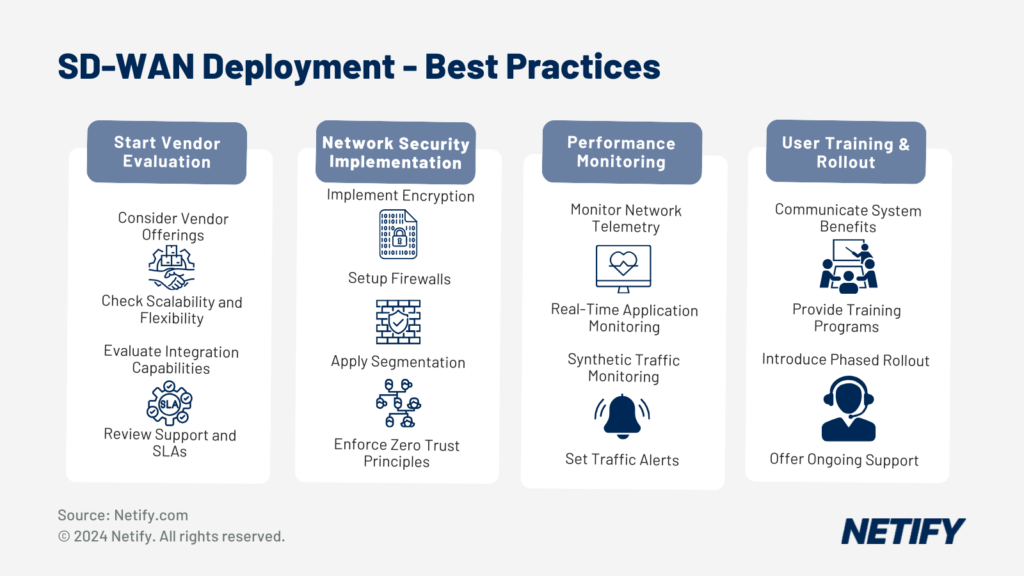
Best Practices for Successful SD-WAN Deployment
The temptation of greater network agility and performance can be hugely appealing, but companies deciding to deploy SD-WAN must be aware of the challenges. MPLS lines from data centres are starting to become a thing of the past, with more and more applications becoming cloud hosted. You can use SD-WAN to address these issues, primarily bandwidth consumption and reducing the time and complexity needed to troubleshoot user issues.
These tips should help you deploy SD-WAN on your network:
1. Find a vendor who can support your particular cloud needs.
This step will simplify your cloud on-ramp and allow for secure yet rapid connectivity to the required applications. Location can play a huge factor in this; some vendors may specialise in North America, which would not benefit a UK local business.
2. Benchmark and compare MPLS and broadband internet speeds.
This benchmark will allow you to make clear and educated decisions on what will be best. Also, identify any areas where improvement is required. E.g. Office 365 traffic requires segmentation from general data traffic.
3. Create a connectivity flow map to understand which applications require more bandwidth and prioritised routes.
This mapping is essential when setting up routing policies, allowing bandwidth to be allocated based on the business needs. The SD-WAN devices should be capable of application-specific routing over all available links with intelligent path control.
